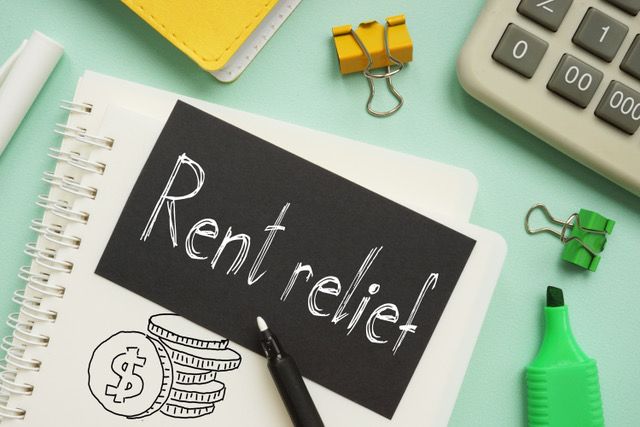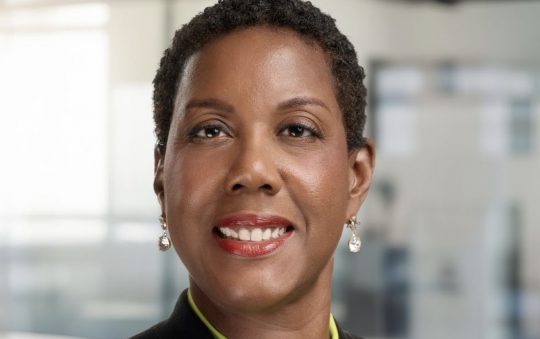
California is in the process of rolling out a massive billion-dollar rental relief program. It is designed to help people who fell behind on their rent due the global coronavirus pandemic recover.
But many renters, including Black Californians who lease residential property, may not know about the state’s new CA COVID-19 Rent Relief program or they may not have details on how to apply for the available assistance. Other advocates say some renters could simply be confused because there are multiple rental relief programs at the county or city level to help renters.
One of the many factors that may complicate the confusion and low awareness in communities about the state’s rental relief program is the fact that the state is under-investing in the public awareness campaign, say some critics who have been following the state’s rollout of rental assistance. Typically, they say, state-run awareness campaigns are executed by public relations and advertising agencies. They then create and deploy campaigns to let state residents know about taxpayer-funded, government-administered programs created to benefit the target audience.
A number of people watching the state process that awarded Prosio Communications, a Roseville firm, the $3.2 million contract to get the word out to Californians about rental relief, say the winning firm slashed its media budget by more than half to submit the lowest bid to win the contract.
Read about the Rent Eviction Ban extended by the Biden Administration
A total of eight companies applied that is scheduled to begin in June and end in December. All of them proposed budgets of about $4 million, unlike the wining contractor.
“The bidding process was troubling on several fronts, but here are some examples,” said one source who spoke to California Black Media but asked to remain anonymous. “First, the company that won the bid did not cut their own fees. Instead, they slashed the money that the federal government provided – that’s taxpayer money — to inform people of this critical help.”
The source said even though the California Department of Housing and Community Development (HCD) allotted $6 million for public awareness, Prosio’s budget for outreach to Californians has been dwindled down to a mere $2 million.
“There is no way on earth, $2 million could successfully inform Californians about this program. There’s just no way in a state of 40 million residents,” the source said.
The federal government has so far authorized $25 Billion to support rental assistance programs in states across the country. Of that money, California is expected to receive $2.6 billion.
A total of $1.5 billion will go directly to the state and another $1.1 billion will be allocated to counties and cities with populations of 200,000 people or more.
Black renters accounted for the highest number of Californians — about 23 %, of Golden State residents last July — who could not pay their rent on time, according to a UCLA report.
Black renters also had the highest rates (29%) of being behind on housing payments in general due to the COVID-19 pandemic. Among homeowners with a mortgage, Black households also had the highest rates of missed or partial payments at 22 %, according to Harvard University’s Joint Center for Housing Studies (JCHS).
“An estimated 1.5 million California families, front-line workers and low-wage earners are behind on their rent due to the economic fallout of this pandemic,” said California Business, Consumer Services and Housing Agency (BCSH) Secretary Lourdes Castro Ramirez.
“They have accumulated significant debt and their landlords are struggling to meet their financial obligations,” Ramirez continued. “The CA COVID-19 Rent Relief program will be a lifeline to renters and landlords. It clears accumulated rental debt, keeps families hardest hit housed and will lead to a more equitable economic recovery.”
California has the highest number of people in the country who are housing insecure. According to Tenants Together, a renter advocacy organization, more than 22 million people are renters, about 55% of the population, in a state where about half of its residents live at or near the poverty line.
Among Black Californians, 3 in 5 Black people live in renter households, according to the California Budget and Policy Center. Of that number, about 6 in 10 Black individuals are classified as “housing cost-burdened” – that is households that spend 30 % or more of their income on a rent or mortgage.
According to Ramirez, since the state launched the rental assistance programs, there has been an underrepresentation of minority applicants.
Adding to the state’s housing woes, is the unavailability of affordable homes and an enduring homelessness crisis, the worst in the nation.
The average price of a home in California is more than seven times higher than the average income.
In the midst of a global pandemic, the homeless population in Los Angeles — where the twin crises of homelessness and housing affordability are worst in the state — has gone up 13% over the course of a year. Reports indicate that there have been about 41,000 homeless people in Los Angeles.
State housing officials say the rental program is designed to provide California residents in select cities with income-based financial relief by paying landlords the money owed.
“The CA COVID-19 Rent Relief program will reimburse landlords up to 80 % of an eligible renter’s unpaid rent accrued between April 1, 2020 and March 31, 2021, if they agree to forgive the remaining 20 %,” said Kimberly Brown, a spokesperson for HCD. “Eligible renters whose landlords choose not to participate in the program may apply on their own and receive 25% of unpaid rent between April 1, 2020, and March 31, 2021. Paying this 25% by June 30, 2021 can help keep you in your home under the extended eviction protections in SB 91.”
During a recent HCD webinar, speakers came together to discuss various plans and proposals in the Legislature aimed at solving California’s housing crisis.
Gustavo Velasquez, director of the HCD, believes it is the duty of the California Legislature to set the standard for housing issues. However, according to Velasquez, local partners are the greatest weapon in the state’s war on homelessness.
“As elected leaders, local agency staff and local government officials, you are really the most important partners in California in addressing this unsustainable housing crisis,” Velasquez said in the webinar. “The state can set the standards but success or failure ultimately rests on the local level in communities that are struggling today to meet the housing demands of so many.”
Brown detailed some of the qualifications for rental relief through the program.
“For all applications received, the state will first review and commit funds to applicants who are eligible and meet the priority requirement having income at or below 50% of Area Median Income (AMI) to ensure those most in need receive assistance,” Brown stated.
Brown told California Black Media how many applicants have applied for the program.
“So far, there have been 48,175 applications submitted,” Brown said. Another 96,000 applications are in progress, according to the BSCH.
Get more information on the California rental assistance program.






